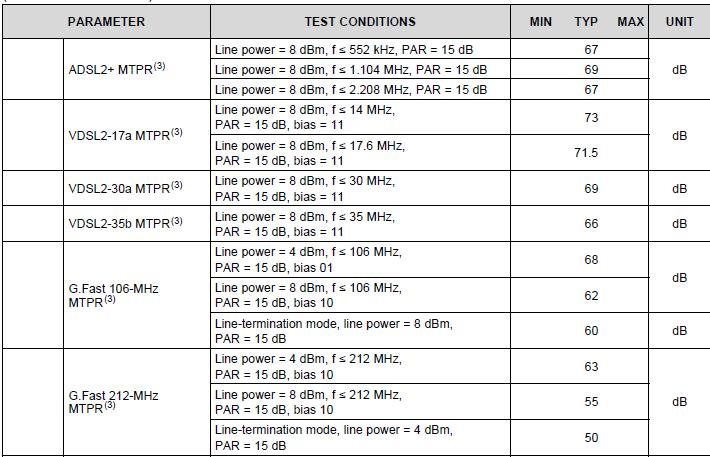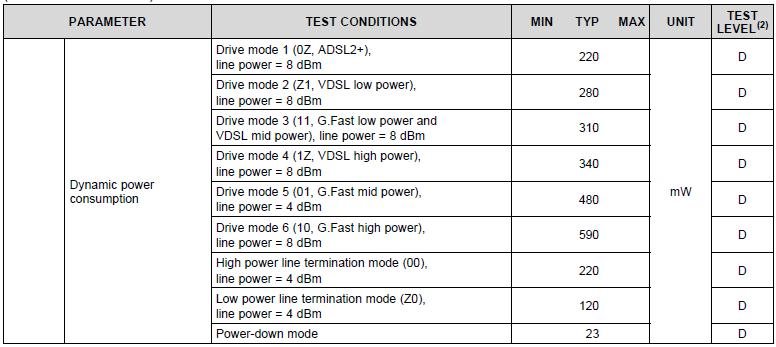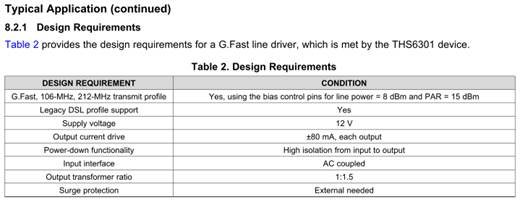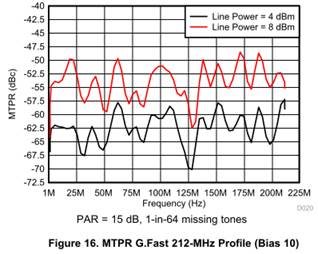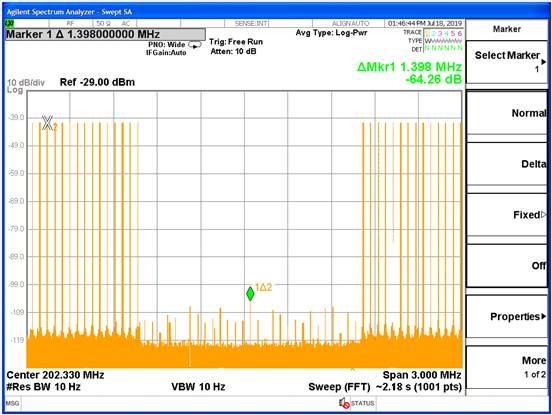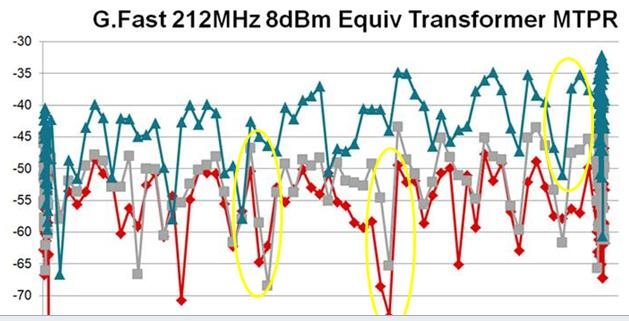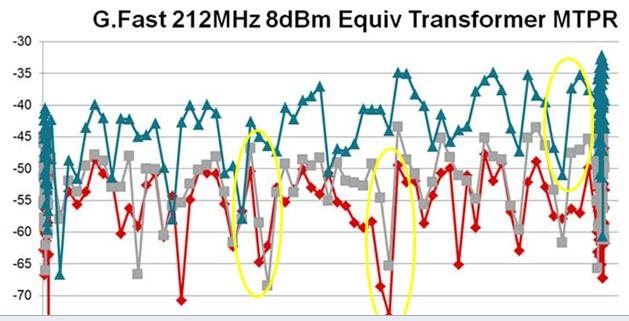Hi,
Could you please help as below question:
1.Need THS6301 actual measurement MTPR report as below:
2. Need THS6301 actual measurement Noise report as below:
3.For dynamic power consumption, we choose Drive mode4(VDSL high power) and Drive mode6(G.Fast high power)
But do no try low/mid power consumption, have any suggestion? Which is good benefice?
4.For customer new project plan, master have VDSL(Long transmission/200Mbyte) /G.fast(Short transmission/2Gbyte) mode and slave line drive(THS6301)
Have any driver mode can support VDSL and G.fast at the same time? Or keep THS6301 G.fast mode support master VDSL/G.fast mode in the same time.
Warm Regards,
Lin


